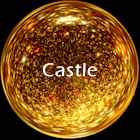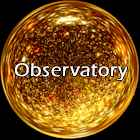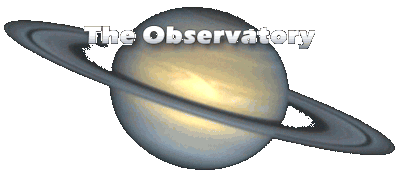
Introducing the Night Sky
Part 2
by John Harper
![]()
Not only do stars vary in brightness, they also vary in colour according to how high their surface temperatures are. This change in colour effect due to temperature, can be seen quite easily if you heat the end of a metal rod. As the rod begins to heat up, it first glows a dull red, then as further heat is applied, it begins to glow with a brighter orange colour; more heat, yellow, then hotter still, white. If we could heat it further without the rod melting, it would glow with a bluish white colour, rather like an oxy-acetylene welding flame. Stars also show this same colour range, from red stars with a surface temperature 2 600 deg C, through yellow stars, like our sun, to blue-white stars with surface temperatures in excess of 20 000 deg C. So, as well as different brightness, different colours can be seen amomgst the stars. Later, in our tour of the night sky. I will point out some of the more noticeable coloured stars which are quite easy to recognise.
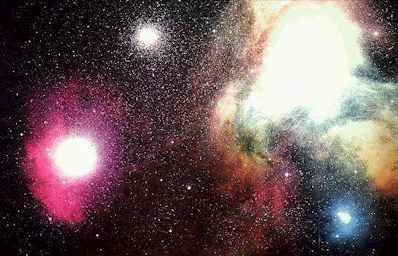
Star colour in the vicinity of Antares. ( alpha Scorpii )
The earliest astronomers were country folk, who could see the stars in their undimmed splendour. Today unfortunately, the light of towns and industrial complexes pale the sky with artificial luminosity - this is called Light Pollution by astronomers, and it can be a great nuisance. Those early astronomers would gaze up at the night sky, and let their imaginations connect up the stars into recognisable patterns, to which names were given, and about which stories were told. There, was the outline of Orion, the great hunter from Greek Mythology, and over to the right and slightly above him, as if about to attack, was a gigantic bull; while at Orion's feet, Lepus the Hare was about to dart away because Canis Major, the Great Dog, and companion of Orion, was nearby. In another part of the sky, the outline of Cygnus, a giant flying swan seemed to be flying towards another bird Aquila the Eagle, hovering above the horizon as if about to swoop down on its prey. So the constellations, or star groups, began to be named.
As the years turned into centuries, these patterns became so familiar, that their names were recorded for future generations, and we still see the ancient star patterns to this day. I have to admit here, though, that those early astronomers must have had extremely good imaginations, because there are very few constellations which give a clear impression of the person, animal or thing that they are supposed to represent. So don't expect to find the outline of a crab, a horse, people or whatever clearly defined in the night sky like a connect the dots picture, very few constellations look realistically like their namesakes.

Orion the Hunter and Lepus the Hare.
At first it was believed that the stars were fixed immovable in the heavens in relation to each other, but we now know that all the stars are in motion and are moving at many miles every second on their paths through space. It is because of their remoteness that many centuries must pass before any change of position can be detected with the naked eye. To illustrate this, imagine looking out of the window of a fast moving train. Objects near the side of the track whizz by so quickly that you get dizzy trying to look at them, but trees in the distance seem to pass by very slowly, while hills on the horizon hardly seem to move at all. However, they are all passing by at the relative speed of the train. Increasing distance merely prevents you from noticing this. An example of a star moving through space is of course our sun, which at this moment is travelling at the rate of 12 miles (19 km) per second relative to neighbouring stars, taking all the planets, with their moons, with it. Since you started reading this article we have travelled some14 000 miles (23 000km) in the general direction of the constellation Lyra, the Lyre or Harp. So the constellations we see today are much the same as they were when they were first named over 3000 years ago. The stars do not seem to have moved much at all.
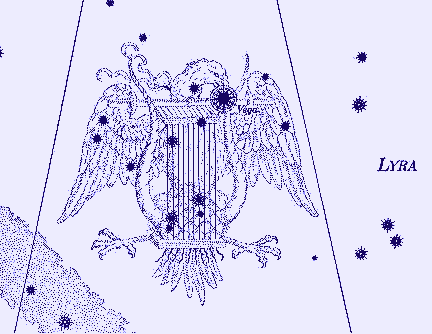
The constellation of Lyra the Lyre.
There were, however, four easily seen bright star-like objects which did appear to move amongst a huge circle of twelve constellations surrounding the earth. Early astronomers noticed how these four stars were clearly in motion against the background of fixed stars. To these moving stars they gave the name planet, from an old Greek word meaning 'wandering star'. Each planet was very bright, and because of their movement which made them more special than the rest of the fixed stars, they were eventually given the names of ancient deities, Venus, Mars, Jupiter and Saturn. Today we know these wandering stars as other worlds, neighbours of the Earth and members of the Solar System, eternally circling the sun. But what of the rest? Mercury was frequently too close to the sun to be seen against a dark sky, but it had been noticed and given a name. Uranus, Neptune and Pluto, however, are so faint that they were not discovered until after the invention of the telescope within the last 300 years.

Mercury, the Messenger of the Gods.
The ring of 12 constellations apparently surrounding the earh against which the planets move, is called the Zodiac, a word meaning 'Circle of the Animals', because with one exception, these twelve star groups are all named after animals (including people). When it was realised that the sun and moon also appeared to move through the zodiacal constellations, the belief in Astrology developed. Astronomy is, of course, the scientific study of the stars, whilst Astrology is the belief that the position of sun, moon and planets can affect people and events on the earth.
'Circle of the Animals'
The constellations of the zodiac, through which the sun, moon and planets appear to move are, Aries the Ram, Taurus the Bull, Gemini the Twins, Cancer the Crab, Leo the Lion, Virgo the Virgin, Libra the Balance, (or Weighing Scales), Scorpius the Scorpion, Sagittarius the Archer, Capricornus the Sea Goat, Aquarius the Water Carrier, and Pisces the Fishes.
A mnemonic to help you remember the order of these constellations goes as follows.
"The Ram, the Bull, the Heavenly Twins, And next the Crab, the Lion shines The Virgin and the Scales; The Scorpion, Archer and Sea-goat, The Man who pours the water out, And Fish with glittering scales."
We shall come across the Constellations of the Zodiac in our tour of the night sky, and if there is a bright 'star' in one of these zodiacal star groups that is not mentioned, it is sure to be one of the four planets, Mars, Venus, Jupiter or Saturn.
![]()
<< Back to Part 1 On to Part 3 >>
Written by John Harper for Diarmid's Observatory
